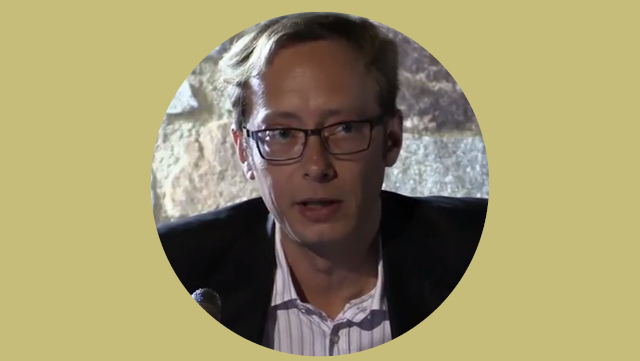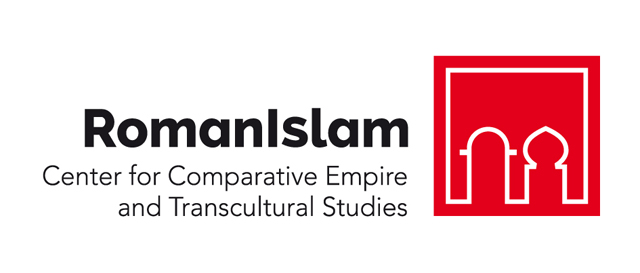Dr. Fedor Schlimbach
April 2023 - March 2024

Research Project: The appearance of churches in the countryside as symbols of secular and spiritual authority in the 6th and 7th century
The research project deals with church buildings in rural environments of late antique and ‘visigothic’ Hispania (6th and 7th century). Many of them were private foundations of wealthy landholders, designated once to enclose their sepulture, on the one hand, and to ensure the pastoral care for the local population, on the other hand. Beside some few conserved church buildings, we mainly deal with archaeological sites revealing the excavated remains of such churches. In Hispania, the founding of churches in the countryside can be traced back to the 4th century, when at times late roman possessors installed christian oratories within their villae, first and foremost designated for their own worship. Nevertheless, the phenomenon substantially increased in the 6th century, and since then, rural churches were founded not only in the context of older settlements or estates, but also on ‘new’ sites which never had been populated before. These new foundations frequently were constructed on representative, sometimes spectacular locations as on hills or mountain slopes, ignoring the resulting disadvantages in accessibility and living conditions – contrary to the late roman villae which usually were located in valleys or on plains. Presumably, this was less a result of ‘strategical’ considerations by these founders rather than of representative aspects, i. e. the aim of visualizing material wealth, piety, and their authority over both, people and land, in secular and spiritual regards. The 6th and 7th-century sites will thus be analyzed focusing on their topographical context, the natural and scenic conditions and their relations to contemporary settlements and the road network, highlighting how far the staging of architecture within the scenic conditions of the circumjacent landscape could be deployed to manifest ‘prestige’ in the rural areas.
Profile
Dr. Fedor Schlimbach is an archaeologist specialized in the Mediterranean region in the periods of Late Antiquity and the Early Middle Ages. He studied the subjects ‘Christliche Archäologie und Byzantinsche Kunstgeschichte’, ‘Klassische Archäologie’ and ‘Kunstgeschichte’ at the Johannes Gutenberg-Universität at Mainz, the Université de Bourgogne at Dijon and the Georg-August-Universität at Göttingen. He concluded his studies with a master’s thesis on the early medieval ‘Ermita de Nuestra Señora de Peñalba’ in northern Spain and then authored a doctoral thesis on the basilica San Juan Bautista at Baños de Cerrato (Palencia) and the stone-block churches of the Visigothic kingdom of Toledo. From 2008 to 2022, he was employed as research assistant at the Ruprecht-Karls-Universität in Heidelberg, at the Madrid department of the Deutsches Archäologisches Institut, at the Philipps-Universität in Marburg and at the Georg-August-Universität in Göttingen. In 2010, he directed the excavations of the ‘cathedral’ of al-Andarīn in Syria, the ancient Androna, and from 2013 to 2016 those of the late antique basilica at the site of ‘La Losilla’ near Añora (Córdoba) in Spain. From 2018 to 2023, he conducted his own research project on the church and settlement at the site of ‘La Losilla’ and the settlement structures in the rural areas of Baetica in late antique and visigothic time. His main research topics are late antique and early medieval architecture and building sculpture, as well as the archaeology of rural sites in late Roman and Visigothic Hispania and in Early Byzantine Syria.
CV
Selected Publications
Schlimbach, Fedor (2022), “Christliche Archäologie und Byzantinische Kunstgeschichte an der Abteilung Madrid des Deutschen Archäologischen Instituts”, in: Sabine Schrenk / Ute Verstegen, eds., Forschungsgeschichte als Aufbruch. Beiträge zur Geschichte der Christlichen Archäologie und Byzantinischen Kunstgeschichte, XXIV. Tagung der Arbeitsgemeinschaft Christliche Archäologie (Bonn, May 10th to 12th 2018), Heidelberg: Propylaeum, 241-250.
Schlimbach, Fedor / Stylow, Armin Udo (2021), “Eine singuläre westgotenzeitliche Grabinschrift aus den Pedroches (Prov. Córdoba)”, Zeitschrift für Papyrologie und Epigraphik 217, 95-104.
Schlimbach, Fedor (2020), Neue Forschungen in al-Andarīn: Das Ensemble der ‚Hauptkirche‘ von Androna. Mit einem Beitrag von N. Viermann zu den Inschriften-Neufunden der Kampagne 2010” Heidelberg: Propylaeum.
Schlimbach, Fedor (2017), “Die Kapitelle in Reccesvinths Basilika. Zur Verwendung von Spolien im 7. Jh.”, in: Sabine Panzram, ed., Oppidum – civitas – urbs. Städteforschung auf der Iberischen Halbinsel zwischen Rom und al-Andalus (Geschichte und Kultur der Iberischen Welt 13), Berlin - Münster: LIT Verlag, 519-534.
Schlimbach, Fedor (2016), “Die Basilika San Juan Bautista in Baños de Cerrato (Palencia) und die ‚westgotischen Quaderbauten‘. Bemerkungen zum aktuellen Forschungsstand”, in: Ines Käflein / Jochen Staebel / Matthias Untermann, eds., Im Schnittpunkt der Kulturen: Architektur und ihre Ausstattung auf der Iberischen Halbinsel im 6. – 10./11. Jahrhundert. Akten der Internationalen Tagung (Heidelberg, October 30th to November 1st 2009), Frankfurt am Main: Iberoamericana Vervuert, 537-556.
Schlimbach, Fedor (2015), “Die sogenannte ‚Krypta‘ im spätantiken Kuppelraum von Centcelles bei Tarragona”, in: Achim Arbeiter / Dieter Korol, eds., Der Kuppelbau von Centcelles. Neue Forschungen zu einem enigmatischen Monument von Weltrang (Iberia Archaeologica 2), Tübingen: Wasmuth, 63–76.
Schlimbach, Fedor (2014), San Juan de Baños und der Kirchenbau im westgotischen Königreich von Toledo (Iberia Archaeologica 17), Darmstadt: Reichert.
Schlimbach, Fedor (2011), “Byzantinische Einflüsse auf den westgotenzeitlichen Kirchenbau in Hispanien? Bemerkungen zur Herleitung der Motive innerhalb der Baudekoration von Santa María de Quintanilla de las Viñas (Burgos) im Streit zwischen Visigotistas und Mozarabistas”, in: Michael Altripp, ed., Byzanz in Europa. Europas östliches Erbe. Akten des Kolloquiums ‚Byzanz in Europa‘ (Greifswald, December 11th to 15th 2007), Turnhout: Brepols, 184-243.
Schlimbach, Fedor (2009), “San Román de Hornija, Chindasvinth und Reciberga. Zur westgotischen Gründung des Klosters in der Tierra de Campos”, Anales de Arqueología Cordobesa 20, 349-378.
Schlimbach, Fedor (2006), “Die Ermita de Nuestra Señora de Peñalba bei Arnedillo (La Rioja)”, Madrider Mitteilungen 47, 253-284.


